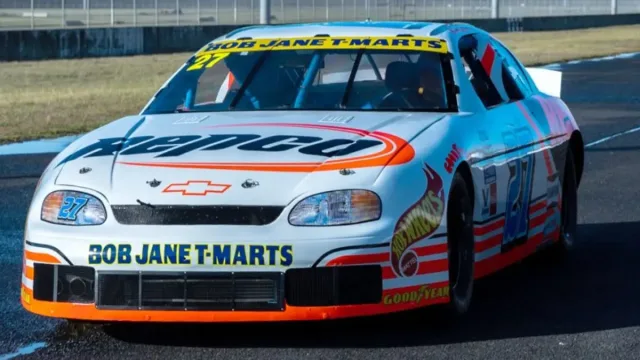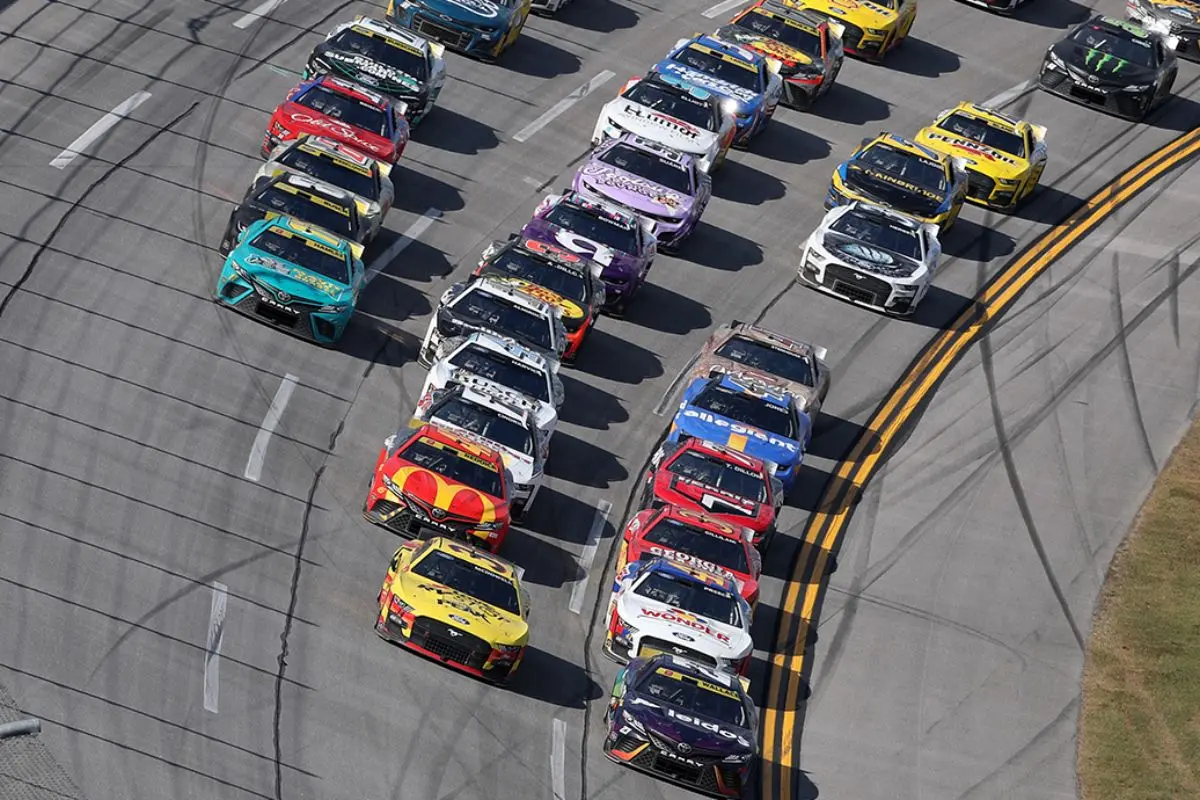Drivers Abandon Supercars for NASCAR: Something big is happening in the world of motorsport. Australian Supercars, once a fan favorite, is losing its top drivers to NASCAR. Why are these stars leaving? Is it the thrill of NASCAR or trouble brewing in Supercars? With drivers like Shane van Gisbergen switching sides and fans calling Supercars “boring,” the series faces a tough road ahead. Could this be the beginning of the end for Supercars, or is there still hope to turn things around?
Key Highlights
- Drivers are drawn to NASCAR’s global audience and competitive racing style compared to Supercars’ declining fan engagement.
- Supercars’ limited race weekends and sparse scheduling push drivers towards NASCAR’s expanded calendar and diverse racing opportunities.
- Australian drivers are migrating due to Supercars’ internal dissatisfaction, regulatory constraints, and uncertainty in racing infrastructure.
- NASCAR offers logistical accessibility, scheduling flexibility, and lucrative opportunities, appealing to drivers seeking greater visibility.
- Supercars faces risks of diminished talent retention amid driver migration to NASCAR and needs strategic changes for future viability.
Growing Connections Between NASCAR and V8 Supercars
The convergence of NASCAR and V8 Supercars is an intriguing evolution in the world of motorsport, marked by shared engineering advancements and competitive aspirations. Both series have adopted engineering innovations, with Australia’s Gen 3 V8 Supercars and NASCAR’s Next-Gen cars exhibiting striking similarities in design and performance. These advancements include a focus on aerodynamics, powertrain efficiency, and chassis improvements, creating a more balanced and exhilarating racing experience.
The engineering kinship between the two racing formats has naturally nurtured a deeper connection, where drivers are increasingly venturing beyond their native circuits. The migration of talent from Australia to America, particularly into NASCAR, is propelled by more than just mechanical commonality. It is a proof of the shared competitive ethos and the appeal of competing on an international stage.
Prominent Australian drivers like Cam Waters, Will Brown, and Shane van Gisbergen have been drawn to NASCAR, their aspirations fueled by the opportunity to compete in a series with a considerable global footprint. The attraction lies not only in the engineering challenge but also in the potential for career expansion, as NASCAR offers a platform with a broader audience and more varied competition.
This growing exchange is reflective of a broader trend within motorsport, where geographical boundaries are increasingly blurred by shared technology and mutual respect among racing communities.
As this relationship develops, it amplifies the global appeal of both NASCAR and V8 Supercars, promising a future where the best of both worlds can be showcased to an international audience hungry for speed and spectacle.
NASCAR vs. Supercar
In the midst of the growing trend of drivers migrating from Supercars to NASCAR, a detailed examination of the differences and similarities between these two motorsport series reveals the nuanced factors influencing their choices.
At initial glance, both NASCAR and Supercars share similarities that make the shift relatively seamless for drivers. The structural likeness of the vehicles, particularly their performance on road courses, mitigates the learning curve, allowing drivers to adapt swiftly and compete effectively. This is evidenced by Shane van Gisbergen, whose skill in Supercars translated into a triumphant entry into NASCAR.
“The first obvious reason is that the cars are so similar that the learning curve won’t be as steep, especially on road courses.” – Jake Sim racing
However, the decision to switch is not solely based on vehicular similarities. Drivers, including van Gisbergen, have expressed discontent with the current state of Supercars racing, citing regulatory constraints that stifle competition. The Supercars series, according to van Gisbergen, devolves into monotonous races where drivers conserve tires rather than engage in exciting head-to-head battles.
“The qualifying there is awesome, but the racing sucks. It’s so boring. You’re driving around at 30% trying to keep the tires, and everybody is just following each other. The tire explodes because it’s running too high, and you just follow each other around. It’s mind-numbing. I came here to NASCAR, and the race was just a hustle the whole time. You’re driving flat out. That’s what I love. Now is a good time to switch.” – Shane van Gisbergen
In clear contrast, NASCAR’s emphasis on aggressive racing, where drivers push their cars to the limit, offers a revitalizing and stimulating alternative.
Moreover, the appeal of NASCAR extends beyond the racetrack. It provides a platform with greater visibility and potentially lucrative opportunities, enticing drivers to investigate new horizons.
The migration of talents like van Gisbergen and Scott McLaughlin highlights a broader trend, reflective of personal aspirations and professional growth. As drivers navigate this landscape, the choice between NASCAR and Supercars becomes a balance between familiarity and the pursuit of a more dynamic, challenging racing environment.
Challenges Faced by Supercars
Disillusionment permeates the world of Supercars, as the series grapples with challenges that threaten its vibrancy and fan engagement. Once a cornerstone of Australian motorsport, the Supercars series now finds itself in a unstable position, marred by uninspired events and a tangible disconnect with its audience. The recent Bathurst 1000, usually a marquee spectacle, was deemed forgettable by fans. This critique highlights a deeper malaise afflicting the series—a lack of creativity and excitement that fails to ignite the imagination of its followers.
The discontent is not limited to spectators alone. Even those within the racing community, like Tickford Racing, have voiced their dissatisfaction. Their candid query, “Anyone else bored?” echoes a broader sentiment of ennui that seems to pervade the paddock. Such public acknowledgment of the series’ shortcomings suggests that the issues are systemic and require urgent attention.
The Supercars organization has openly recognized the need for introspection and revitalization. However, the path to rekindle its former glory is fraught with challenges. A considerable concern is the series’ ability to retain its top talent, as evidenced by star driver Shane van Gisbergen’s shift to NASCAR. His departure, after an illustrious career in Supercars, signals a troubling trend of driver migration that could further erode the series’ competitive appeal.
“This gives drivers ample time to make appearances in other series. And, with NASCAR increasing the number of road courses recently. There’s a higher chance one of them falls during a break in the Supercars calendar.” – Jake Sim racing
In this climate of uncertainty, the onus lies on Supercars to innovate and re-engage with its fan base. It must navigate these turbulent waters with tactical foresight and a renewed commitment to delivering thrilling motorsport experiences.
Factors Encouraging Drivers to Make the Switch
In the midst of the Supercars series‘ struggle to recapture its former vibrancy, an intriguing shift is occurring as drivers increasingly consider opportunities beyond its borders. Central to this movement is the charm of NASCAR, which offers a compelling alternative for drivers seeking more consistent and expansive racing opportunities.
With the Supercars series hosting only thirteen race weekends for its 34 races scheduled in 2025, drivers find themselves with ample downtime to investigate participation in other motorsport series. This sparse scheduling contrasts with NASCAR’s expanded calendar, which now includes an increasing number of road courses, aligning perfectly with breaks in the Supercars calendar.
One of the most notable factors encouraging this migration is the uncertainty surrounding Australia’s racing infrastructure. As mentioned by notable racing commentator Jake Sim, several tracks have already shuttered, with others under threat from aggressive real estate development and lackluster governmental support. This creates an unstable environment for the future of the Supercars series, making it difficult to maintain a consistent schedule and secure venues.
“It becomes difficult to come up with a good schedule when your tracks are shuttering their doors constantly.”
The local element of our sport has been slowly siphoned. Iconic tracks have since been excluded from the calendar, and long-running teams have been backing out. The commentary has sucked for years, and gen three just isn’t doing anything for me. These cars have barely any presence or relevance in Australia. They’re soulless. Half of the appeal for me, other than the quality of the racing, was that the cars actually used to at least look like the cars that you’d see every day and that you could buy.” – Jake Sim
Furthermore, the format of NASCAR races provides a varied racing experience, attracting drivers enthusiastic to test their skills in a new competitive landscape. The combination of logistical accessibility, scheduling flexibility, and the charm of racing on diverse tracks presents a compelling case for drivers contemplating a switch from the embattled Supercars series to the thriving NASCAR scene.
Future of Supercars: Can Things Change?
The future of Supercars hangs in a delicate balance as the series grapples with dwindling driver participation and the potential repercussions of adopting NASCAR’s contentious playoff system. This tactical pivot, set for the 2025 season, marks a bold departure from tradition and aims to inject excitement into a championship facing a talent drain.
However, the move is fraught with risks, as NASCAR’s experience with the playoff format has shown. NASCAR’s adoption of the system in 2017 was meant to heighten drama, yet it also sparked criticism for overshadowing season-long performance in favor of exhilarating finales. The controversy peaked when Joey Logano, despite ranking 12th in full-season points, clinched his second Cup Series title. This outcome fueled debates about whether the playoff format undermines the value of consistency, a sentiment echoed by critics like JSK, who caution that Supercars may face similar pitfalls.
“Supercar following suit is honestly a silly mistake from a series that is already losing a ton of star power. Ironically, in some ways, this exact message could be copied and pasted, with a few words changed, and it would also be a totally fitting description of modern-day NASCAR.” – Jake Sim racing
For Supercars, the timing could not be more critical. The series is already struggling with a loss of star drivers, and introducing a divisive playoff system risks alienating its core fan base. The challenge lies in balancing the attraction of dramatic championship resolutions with the integrity of rewarding sustained excellence.
As the motorsport community closely watches, the 2025 season will serve as a litmus test for this ambitious approach. Will it revitalize interest and draw in new audiences, or will it exacerbate existing issues, driving fans and drivers further afield? The answers will shape the narrative of Supercars in the years to come.
News in Brief: Drivers Abandon Supercars for NASCAR
The decline of the Australian Supercars series, driven by increased interest in NASCAR, highlights the shifting dynamics within motorsports. Key factors influencing this change include economic pressures, evolving fan preferences, and the attraction of NASCAR’s global platform.
Understanding the similarities and differences between these racing formats is essential for stakeholders aiming to rejuvenate the Supercars brand. Addressing these challenges and leveraging the growing connections with NASCAR may offer pathways to refresh interest and guarantee the sustainability of the Supercars series.
ALSO READ: Shane Van Gisbergen Steps Into NASCAR’s No. 88, Carrying the Weight of Racing Legends



